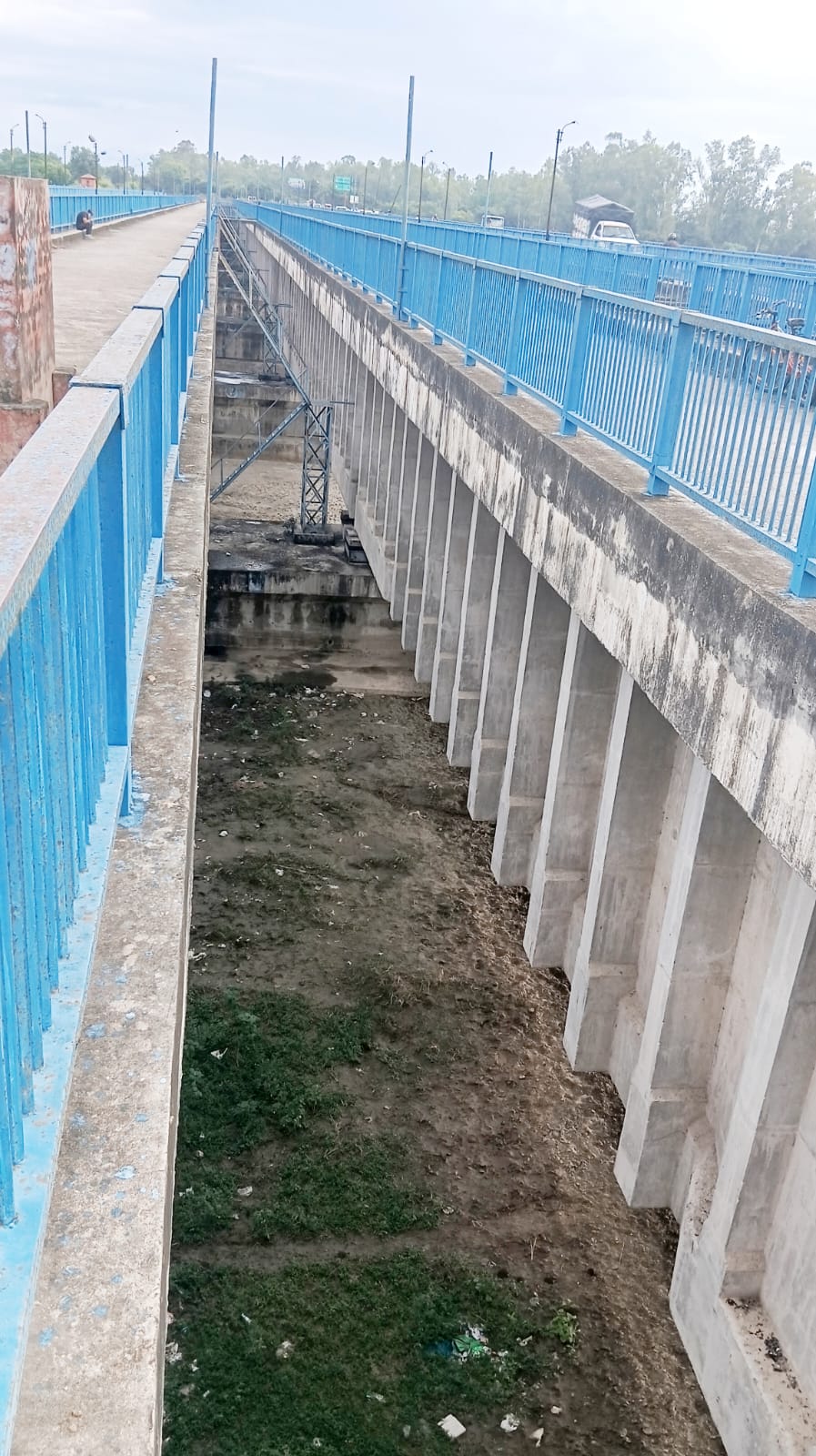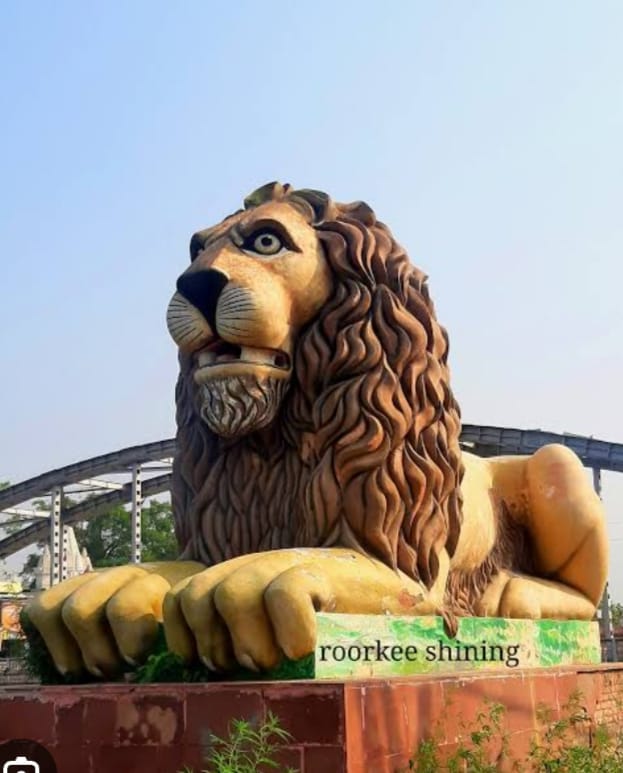By
Kaushal Kishore
Materials Engineer, Roorkee
The new Solani aqueduct on Ganges canal Roorkee was built with prestressed concrete which allows for longer spans and a simple more robust design compared to old bricks, lime- surkhi mortar masonry arches of the old aqueduct, in which 8.5 crores bricks were used, while iron railing used in the sides of two lanes were imported from England. This is interesting to note that materials bringing those days on ship from England to Indian ports take 6-10 weeks via the Suez canal or 3 to 6 months via the longer Cape of Good Hope. Calculate in it also time taken on road from Indian ports to Roorkee.
After retirement from University of now IIT Roorkee I joined M/S Roffe Construction Chemicals Pvt.Ltdd, Mumbai as it’s Chief Concrete Technologists afterwards I became it’s one of the Director.

AQUEDUCT picture taken on 7/10/2025
For the contractor of above aqueduct I designed M-40 grade of concrete with Roffe superpladticizer. Those interested may read my paper by visiting Google site and log in; Civil engineering portal The Ganges canal by Kaushal Kishore.
I had designed numerous concrete mix design almost all cements of India in this I find Utra Tech cement as one of best cement OPC and PPC both With Ultratech cement I had designed numerous concrete mixes from ordinary strength to M-80 grade concrete, self compacting concrete, shot crete concrete, fibre reinforced concrete, fly ash concrete and more There is life after retirement and after retirement I worked for 30 year’s which includes in free time working in home research and testing laboratory and numerous construction sites visits almost all India and outside India. At my age of 92 years I still work for 12 hours daily.
I had never worked for money. In spite of doing so gigantic work what to say about car I even do not have 2 wheeler not any of my house not a single inch of land in this world only pension from IIT Roorkee and few clothes

























i’m the civil engg student(2nd year).actually i want to get any innovative idea about a civil event which should be consider for technical fest.
I think this is the best civil engineering website all over the world!!!!!!!!!!
Am building technician please help me with how to design using bs8110
I am a civilengineering diploma student.what is the correct dencity of concrete mix
usually 24 kN/m^3 for hardened concrete and 25 for wet concrete
you have to test it…. it is depend upon cement quality
24 kN/cum for plain concrete and 25 kN/cum for RCC.
25kn/m3
25kn/cum
25 kg/ cubic meter
Hello fellows. I am in need of ‘highway and traffic engineering textbook by garber and leister hoel’ please help me or give the free download link.thanks in anticipation.
Civil engineering is similar to environmental engineering?
Enviromental Engineering is a discipline of Civil engineering
environmental engg is a part of civil engg..
Yes this is right because the environmental is part of civil engineering. the civil engineering has diffreend branches
NOT AT ALL …….. environment engineering is related to chemical engg…….
is water cement ratio by weight same as that of by volume???
the specific gravity of water is 1 so we can measure the water eqivalent to wt
yes
is there any pdf or ebook which content all fundamentals of civil engg.?thanks
tss realy a civil engineer home . . .
i m doing b.tech civil engineering, after completition of this what should i do????
I my opinion you do further studies M.Tech/M.E in structures which is valuable course by which u can choose either design field or teaching profession. Wish u good luck. Take care.
go for a job once you finish ur b.tech for atleast 1 yr.this will give u field experience…further you can go ahead for higher studies …
i am diploma ty student
please tell me about mix design of concrete……….
please suggest me books for ADVANCE STRUCTURAL ANALYSIS
ADVANCED STRUCTURAL ANALYSIS by DEVDAS MENON is a very good book
Today most importent and valualeble engg. is civil engg.
Hello fellows,
I am a student of final year civil engineering ( transport infrastructures major) and i’m looking for an internship of 4 months at least, for that i would like to know if you can advice me any website where i can find civil engineering intership offers (worldwide)
visit the official websites of govt companies like FACT,ONGC…etc.
im doing a project on “framed support membrane structures”..can u suggest me few websites and innovative ideas related to this topic..
ALL THE BEST…………….
pls refer the ramamrutham book and s.jain.,
Hello all,
I am having an interveiw in few days, can u suggest sumthing to takkle this,
the firm is for building & roads mainly, should i prepare sumthing special on these two????
i am a first year student in civil engineering. please suggest me a good book for engineering mechanics
“Engineering Mechanics” by Koteeswaran will help to learn the basics clearly
i think ramamrutham is the best author machanics and N.srinivasulu
timosenko and young
tayal
both r good books
what kind of jobs is preferable to girl students in civil engineering? what do the company company expect? because most of the companies recruiting only boys even though girls are equally talented.kindly suggest
Most of the girl students of civil branch thinks that companies are recruiting boys only or mostly boys. it is mainly because the moment civil job comes into pictures everybody thinks cement,concrete,sand etc in site. but in realty design field of civil branch is awesome. girls can do this nicely as u have to stay simply in office and design the structures.
I AM ALSO THE CIVIL ENGINEER.IT IS THE BEST WAY TO ACHIVE SUCCESS.
please tell me actual defination of moment of inertia???? conceptional